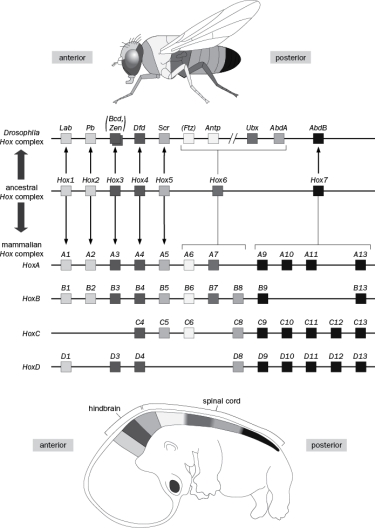Essay
Hox genes are highly conserved players in anteroposterior patterning and were named for the homeotic transformations exhibited by their mutants in Drosophila.  Figure
Figure
A. The original Antp mutant has legs in place of antennae. Is this a gain- or loss-of-function mutation?
B. The original Ubx mutant has a second set of wings instead of halteres (flying organs normally found on the third thoracic segment). Is this a gain- or loss-of-function mutation?
C. Although the role of Hox genes in anteroposterior patterning is conserved in vertebrates, HoxA9-13 and D9-13 are used in proximodistal limb patterning. What evolutionary events made acquisition of this novel function possible?
Correct Answer:

Verified
Antennae do not normally express any of ...View Answer
Unlock this answer now
Get Access to more Verified Answers free of charge
Correct Answer:
Verified
View Answer
Unlock this answer now
Get Access to more Verified Answers free of charge
Q18: The complex organization of the human eye
Q19: Ionotropic receptors:<br>A) are expressed in chemosensory neurons
Q20: Put the following events of the yeast
Q21: Type I rhodopsins:<br>A) are only found in
Q22: What evidence best supports the independent gain
Q24: In clever experiments, expression of the human
Q25: Some dragonfish (Stomiidae) family members have rod
Q26: Which of the following is an example
Q27: Glial wrapping of axons:<br>A) emerged once, prior
Q28: Humans that are born blind or deaf